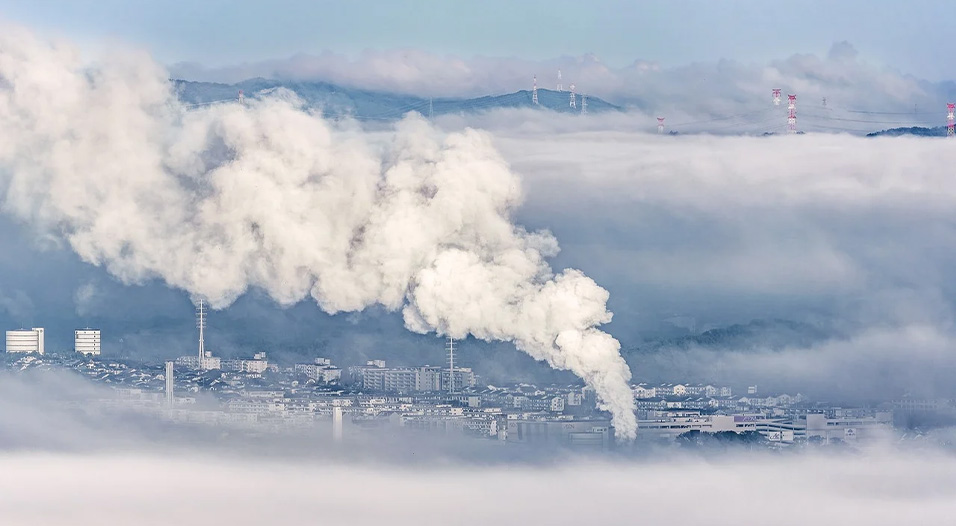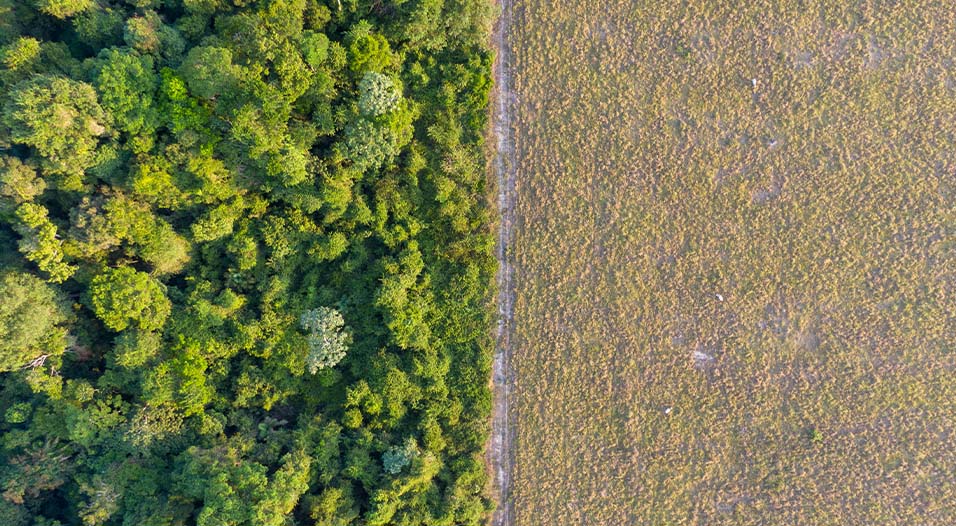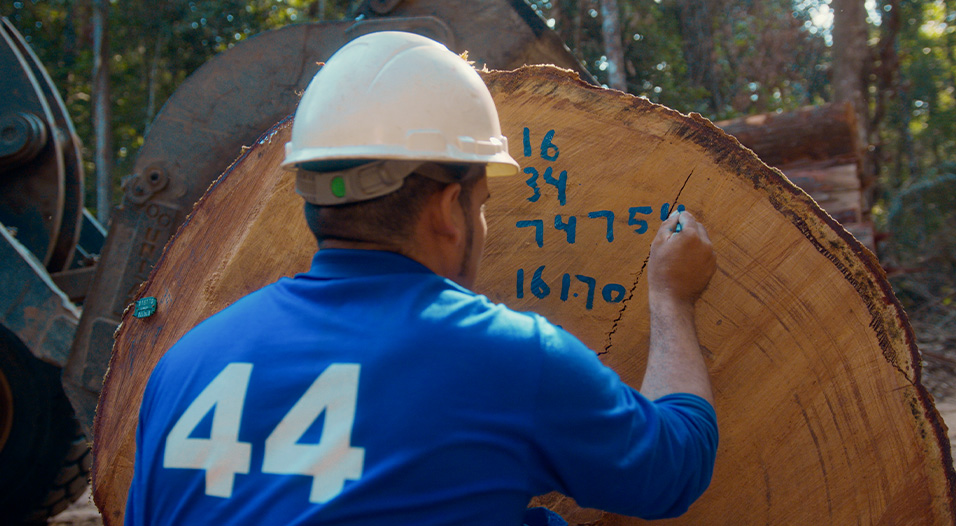Combating climate change should be a top priority in every industry moving forward. Luckily, many have already started making pledges and implementing those changes. While these endeavors are necessary, they sometimes just aren’t enough. There’s just something missing.
So what is that missing piece in the climate change puzzle? Wood lumber.
Lumber is the only building material that can effectively change the course of climate change as we know it. And that change comes through a process known as carbon sequestration. Carbon sequestration works by removing carbon from our environment. Through it, we can start to see a reversal of some of the most harrowing effects of climate change.
In this article, we’ll explain what carbon dioxide is, why it’s harmful, how carbon sequestration works, and how we can start to enact genuine change. We’ll also discuss how Lumber Plus is doing its part to combat harmful CO2 emissions.
How Carbon Dioxide Threatens Our Globe

Carbon dioxide is one of the greatest contributors to climate change as one of the primary greenhouse gasses.
Greenhouse gasses trap heat in the Earth’s atmosphere by creating holes in the Earth’s protective Ozone layer. Many of the effects of climate change can be attributed to these greenhouse gasses. Some other greenhouse gasses include methane, nitrous oxide, and water vapor.
Since the Industrial Revolution, carbon dioxide levels have skyrocketed, releasing large quantities of greenhouse gasses into the atmosphere. As of now, carbon dioxide levels are at an all-time high.
Carbon dioxide poses a number of threats to our globe, such as:
- Increased smog and pollution
- Increased potential for intense precipitation like hurricanes or large storms
- Reduced crop yields
- More forest fires
- Extreme heat, and subsequent extreme weather events
What Produces Carbon Dioxide?
There are a number of contributors to harmful CO2 emissions. In fact, CO2 is produced naturally and is important to our ecosystem. However, as with anything, high concentrations of the gas are dangerous.

Common sources of carbon dioxide include:
- Burning of fossil fuels by power plants
- Large-scale deforestation caused by cattle growth and agriculture
- Electricity and heat
- Cars, planes, busses, and other forms of transportation
- Harmful or unsustainable industrial processes
- Building industry – materials manufacture
Without proper action, industrialization will continue to affect our world and the things that live in it. Reducing carbon emissions is where we start to reverse this damage.
How Does Lumber Play a Role in Combating Greenhouse Gases?
Believe it or not, wood is the only building material that we can effectively use to reduce carbon in our environment.
The sole function of trees is to absorb CO2 and distribute oxygen back into the atmosphere. Whenever a tree dies or reaches its peak in lifespan, it slowly releases CO2 back into the environment. Similar to pruning a bush, our suppliers enter the forest and carefully identify these older, dying trees—these are the ones they harvest. Ensuring that only dying trees, which would release CO2 if left unchecked, are removed from the forest.
Harvesting the right lumber in the right places is essential in successfully limiting carbon emissions. As mentioned earlier, aging trees in overpopulated forests are the ones releasing CO2. By finding and selectively harvesting these specific trees, our suppliers effectively remove those harmful sources of CO2 while still increasing the supply of lumber available for our customers.
What is Carbon Sequestration?
Since we started Lumber Plus, we have maintained a strong chain of custody to ensure that our suppliers harvest lumber with the goal of carbon sequestration in mind.

Carbon sequestration is the process by which carbon is removed from the atmosphere and successfully contained, or sequestered. The gas is sequestered in either solid or liquid form, where it can no longer affect our atmosphere.
There are three types of carbon sequestration:
- Biological Carbon Sequestration: Carbon dioxide is stored in wetlands, grasslands, soils, oceans, or forests.
- Geological Carbon Sequestration: Carbon is trapped in underground geological formations, or rocks. It is usually captured from an industrial source.
- Technological Carbon Sequestration: Using new technologies, researchers are exploring ways to sequester carbon technologically.
At Lumber Plus, we take great pride in our commitment to sustainability and environmental responsibility. As a retail channel, we prioritize sourcing wood from companies that share our values and respect for the planet.
Through a meticulous certification process, we carefully select wood from sustainable, well-managed forests. We partner with companies that prioritize biological carbon sequestration, recognizing the vital role trees play in absorbing CO2 and distributing oxygen back into the atmosphere.
Benefits of Fewer CO2 Emissions
Choosing the right trees to harvest means less carbon dioxide to wreak further havoc on our planet. By actively reducing CO2 emissions, we hope to reverse some of the damage done to this earth.
Some benefits of carbon sequestration are:
- Reduced CO2 emissions can save the lives of millions with improved air quality. Cleaner air means fewer asthma attacks, heart attacks, and chronic bronchitis.
- Lowered the risk of natural disasters like hurricanes, tornados, tsunamis, and so much more.
- Regulated Earth temperatures, restoring the planet to its natural rhythms.
- Sustainable jobs in energy efficiency are created for millions of unemployed individuals.
- Diminished, or even halted, effects of climate change
Carbon sequestration is the number one way to effectively limit harmful emissions. More industries can take this practice on, by treating wood and lumber as the sustainable resource that it is.
Taking Carbon Out of the Picture
Here at Lumber Plus, sustainability and respect for the planet are at the heart of everything we do. Our selection of sustainably-harvested lumber is here to stand the test of time and successfully eliminate harmful CO2 emissions.
If you’re an architect or designer searching for eco-friendly solutions to your projects, we’ve got you covered. As industry leaders, we’ll help bring your next project to life with only the best materials. Contact us at [email protected] to learn more or give us a call.






